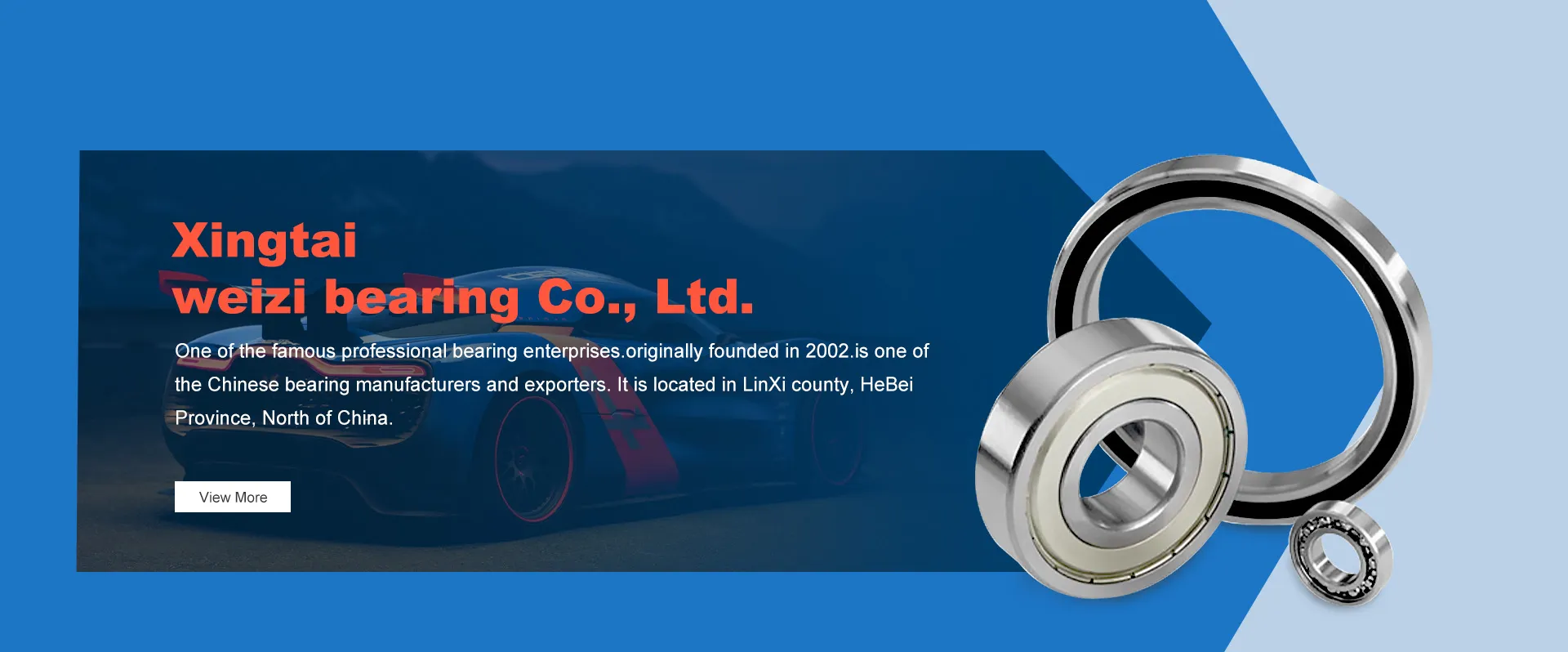
Nov . 29, 2024 11:55 Back to list
Key Specifications and Dimensions of 6303 Bearings for Various Applications
Understanding the Dimensions and Specifications of the 6303 Bearing
Bearings are crucial components in various machinery and applications, playing a vital role in reducing friction between moving parts. The 6303 bearing, a widely used type of deep groove ball bearing, is notable for its versatility and reliability. This article delves into the dimensions, specifications, and applications of the 6303 bearing to provide an in-depth understanding of this essential mechanical component.
Dimensions of the 6303 Bearing
The 6303 bearing has specific dimensional characteristics that make it suitable for a variety of applications. Understanding these dimensions is essential for selecting the right bearing for any given application. Here are the key dimensions of a standard 6303 bearing
- Inner Diameter (ID) 17 mm - Outer Diameter (OD) 47 mm - Width (W) 14 mm
These dimensions are crucial for ensuring that the bearing fits properly in the designated housing and for allowing smooth operation within machinery. The inner diameter needs to match the shaft diameter, while the outer diameter must fit into the housing bore. The width of the bearing also influences its strength and load-carrying capacity.
Load Capacity and Ratings
The 6303 bearing is designed to support axial and radial loads, which are two essential types of forces experienced in machinery. The static load rating (C0) of the 6303 bearing is typically around 14 kN, while the dynamic load rating (C) ranges from 21 to 25 kN, depending on the manufacturer and precise specifications. These values indicate the bearing’s ability to withstand loads without permanent deformation and during operation.
The 6303 bearing also has a limiting speed that varies based on lubrication and operational conditions. Typically, the limiting speed is around 14,000 RPM for greased operations, which is crucial for applications involving high-speed rotations.
Materials and Construction
The 6303 bearing is often constructed from high-carbon chromium steel, a material known for its excellent wear resistance and load-carrying capabilities. This steel is commonly used in the production of high-performance bearings. In addition to high-carbon chromium steel, other materials such as stainless steel or ceramic may also be used for specific applications requiring enhanced corrosion resistance or thermal stability.
The design of the 6303 bearing features deep grooves, allowing it to accommodate both radial and axial loads effectively. The ball bearing design also facilitates lower friction compared to other bearing types, leading to enhanced operational efficiency.
6303 bearing dimensions

Lubrication and Maintenance
Proper lubrication is essential for the longevity and performance of the 6303 bearing. Lubricants reduce friction and wear between the moving parts, dissipate heat, and prevent contamination. Common lubricants used for the 6303 bearing include grease and oil, depending on the specific operating conditions. It’s crucial to select a suitable lubricant that can withstand the operational temperature and environmental conditions.
Periodic maintenance, including regular inspection and lubrication replenishment, is necessary to ensure optimal performance. Signs of wear, such as unusual noises, vibrations, or increased operational heat, should prompt immediate attention and potential bearing replacement.
Applications of the 6303 Bearing
The versatility of the 6303 bearing allows it to be used in a wide range of applications across various industries. Common applications include
- Electric Motors The 6303 bearing is frequently used in electric motors due to its ability to handle high speeds and loads.
- Power Tools Many power tools utilize the 6303 bearing for their efficiency and durability, ensuring smooth operation during heavy use.
- Automotive Industry The automotive sector employs the 6303 bearing in various components such as wheels, transmissions, and engine systems.
- Industrial Machinery In manufacturing and production machinery, the 6303 bearing contributes to the reliable operation of conveyor systems, pumps, and other equipment.
Conclusion
The 6303 bearing is a critical component in many mechanical systems, offering reliable performance and versatility across numerous applications. Understanding its dimensions, load capacities, materials, and maintenance is essential for engineers and technicians when selecting the right bearing for their specific needs. With proper care and lubrication, the 6303 bearing can provide substantial service life, enhancing the efficiency of the machinery it supports.
Latest news
-
Grooved Ball Bearing Design and Functionality
NewsJun.04,2025
-
Concrete Mixer Bearing Load Capacity Testing
NewsJun.04,2025
-
6004 Bearing Dimensions in Robotic Joint Designs
NewsJun.04,2025
-
Advantages of Single-Row Deep Groove Ball Bearings
NewsJun.04,2025
-
Applications of Deep Groove Ball Bearings in Automotive Systems
NewsJun.04,2025
-
Innovations in Bearing Pressing Machine Design
NewsJun.04,2025
